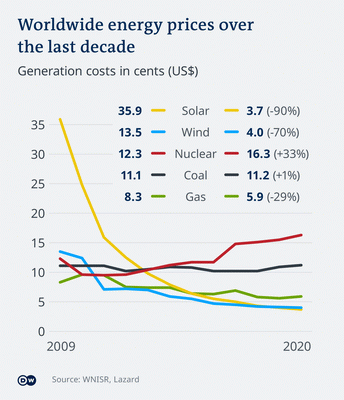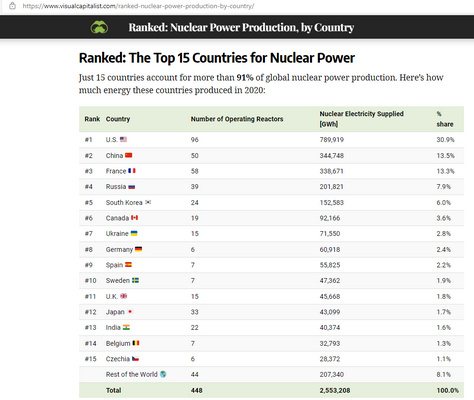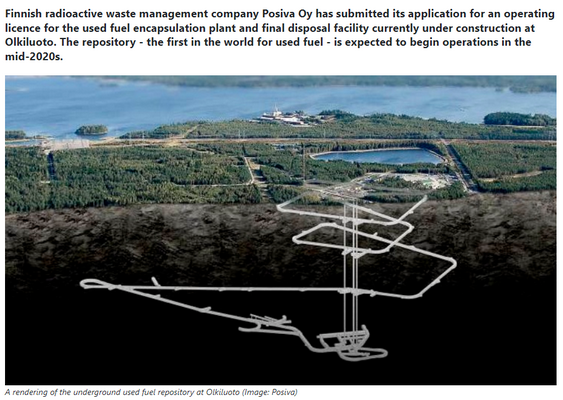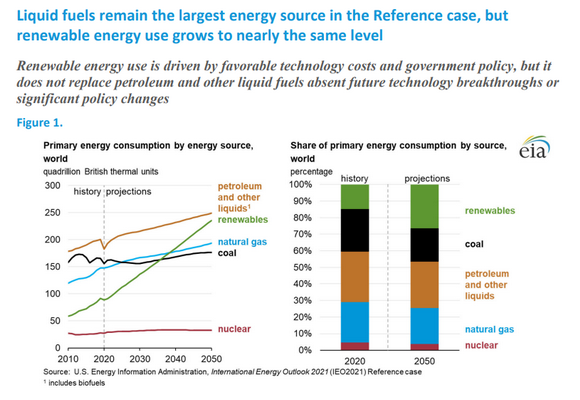Look Up? Or Don’t Look Up?
By Chung Hyunhwa
EU Taxonomy and K-Taxonomy
President Moon’s government had the direction of reducing the dependency on nuclear energy and set a plan to phase-out the energy source, but because the EU taxonomy recently included it as a green energy source under certain conditions, it is causing confusion in the green energy policies of Korea. President Moon’s recent comment about nuclear power being a major source of energy for the next 60 years was criticized from both sides of the political divide because it sounded different from a phase-out, but it was not encouraging nuclear power generation either. Newly elected President Yoon announced that Korea would resume building the two nuclear power plants that Moon had stopped and mentioned ‘pyroprocessing technology’ could be used to solve the nuclear waste problem. At this point, questions arise in times of carbon-neutrality: Is nuclear energy green? Is nuclear energy a shortcut to net-zero emissions? Are there not any other energy solutions?
Nuclear energy releases as low carbon as some energy sources during generation. To justify the usage, the price should be much lower because it leaves radioactive waste for which there is no solution. The below graph is from an interview with Mycle Schneider, the editor of the World Nuclear Industry Status Report, and it shows how the prices of different energy sources have changed recently. As you can see, the prices of wind and solar have dramatically dropped, but not nuclear. Then, why should we take such uncertain risks and inherit such dangerous waste for our next generation? Schneider says, “No one knows how much (the storage of high-level radioactive waste) really costs, because there is no functioning permanent storage facility.” He is also criticizing all these countries that have “no advanced planning in place and no coherent concept as to how their highly radioactive nuclear waste should be stored for eternity.”
The decision of including nuclear energy in the EU taxonomy was made because of the urgency of reducing carbon emissions under the condition that safety should be ensured. The EU also sees this inclusion as a transitional activity, according to an article in World Nuclear News. Twelve countries, including France, agreed to the inclusion, and five, including Germany, did not, mainly because of safety and the creation of nuclear waste. The decision, which looks like a yes to nuclear energy, affected Korea, and just recently, nuclear energy was included in the Korean taxonomy, too. However, extending the lifespan of old reactors or building new ones will have to meet the conditions as in the EU. The truth about the inclusion of nuclear energy in the EU taxonomy is that it drew a stricter line for the conditions to use nuclear energy.

New Nuclear Technologies: SMR, Pyroprocessing Technology, and SFR
SMR is a general term to refer to small modular reactors. SMRs were initially developed for military purposes, such as submarines, because they had to be small. There are over seventy designs being researched at the moment. These small reactors are designed to release the excessive heat more quickly, so they can be built anywhere, while the conventional ones need to be built at the seaside to use water as coolant. This may sound like one of the few options for inland countries where solar panels or wind turbines are not efficient due to their climate conditions, but there many considerations.
Pyroprocessing, which President Yoon recently mentioned, is a technology to recycle used nuclear fuel rods at high temperature in sodium-cooled fast reactors (SFRs). During nuclear power generation, only three percent of a fuel rod is used, with the rest becoming waste, and of course, this gives scientists the motivation to squeeze more out of each one. In Korea, the Korea Atomic Energy Research Institute has been working on this technology for over twenty years. Theoretically speaking, the heat during pyroprocessing can be used to produce electricity while reducing the high-level radioactive waste to 1/20 of the volume, the toxicity to 1/1000, and the time to keep it in storage to “only” 300 years instead of 10,000. On September 1, 2021, there was news that a JFCS report had proven the validity of the research on pyroprocessing by both Korea and the U.S. However, the next day, the Department of Science, Technology, and IT of Korea posted on the Policy News site that the JFCS report did not conclude that the research has proven said validity but only suggested further studies are needed. Professor Jang Jeong-wuk at Matsuyama College, whose is an expert in nuclear energy policy, wrote for No Nukes News in December 2022 that pyroprocessing is a fantasy. In this article, the collaborative experiments with the U.S. used MOX fuel, which was not the type from a light-water reactor that is most common in Korea, so the result was not applicable. In this article, he explains the limitations of pyroprocessing and SFR in depth. The validity of this research was not proven after spending about 60 billion USD for 25 years, which may mean the research is not making any obvious progress.
From his article, I learned thatSFRs an essential part of pyroprocessing technology, because they are the reactor where used fuel rods are reprocessed, but the examples so far showed limitations according to Dr. Jang. For example, Monju SFR in Japan is being dismantled after many accidents including leakages. A French ASTRID was canceled as well. He also explains the reasons why SFRs are not the solution: First, the liquefied sodium used as coolant instead of water is high in reactivity when it meets air or water. This means it can explode. Second, sodium is very corrosive, so SFRs’ lifespan is only 50 years, which means they need to be rebuilt every 50 years because pyroprocessing the waste down to 1/20 takes hundreds of years, causing an increase in the price of power generation if calculated thoroughly. Third, the process requires high temperature that affects the durability of the surrounding parts and devices, so they are expected to be fixed or replaced continuously, which adds to the cost, too. Also, during pyroprocessing, a much larger volume of low and medium radioactive waste is produced. Judging from these reasons, pyroprocessing might be possible experimentally under certain conditions, but it is not for sure to take care of the used radioactive fuel, and there is a group of people which does not want others to know how safe it is, how economical it is, or how long it takes for the process, so they can go on with this game.
Dr. Jang’s article also informs that the only SFR in operation is in Russia, which is being used to burn the plutonium of dismantled nuclear weapons. India started building a prototype Fast Breeder Reactor for military purposes in 2004 and was expected to be finished in 2010, but still has not completed the project with many delays. China is building two SFRs called CFR-600 in Xiapu, Fujian, and is still not finished. In other words, this is not a technology that can be easily commercialized in the near future. Other than these factors, there are research findings on more stable and controllable materials for fuel such as thorium, but this also has downsides that are not easy to overcome.
Nuclear technology has been used since the 1950s. So far, there have been three major accidents: Three Mile Island in 1979, Chernobyl in 1986, and Fukushima in 2011. The Three Mile Island accident did not cause human casualties, but it was shut down for good, and even shutting it down required a lot of money. The Chernobyl accident caused a lot of direct and indirect casualties, as well as economic crises, because of the expenses in dealing with the accident. It is considered to be one of the reasons the Soviet Union collapsed. The Fukushima accident is an ongoing crisis for all countries, especially if they share the waters nearby Japan. Japan no longer wants to spend money for the containers or the facility to store the radioactively contaminated water, and wants to release it to the ocean, insisting it is safe since it is going to be diluted in the ocean water. Now the fishermen and residents nearby who are the biggest victims are trying to stop it. The thing is that there is no going back once it is released, even if the result is not so bad.
The Permanent Nuclear Waste Repository
Since the advent of nuclear power, people have just been hoping for a solution to radioactive waste. Sadly, 70 years have passed, and nothing miraculous has been found. It is the consensus that burying nuclear waste 500 meters underground is the most realistic solution, which is not exactly a new technology. Permanent means until the radioactive waste finishes its reaction. It takes one centrennium (100,000 years) for such waste to lose its toxicity, and our human history is so far shorter than that. Given this, you can figure how long the waste needs to be stored and how hard it would be to find a place safe from any tectonic activities during that length of time. So, I looked into how many countries have permanent storage facilities.

In the above ranking from 2020, the three top countries in terms of the number of nuclear power plants are the U.S., China, and France. (Note that the total number of reactors worldwide is 448, and 204 are in these three countries.)
The U.S. does not have a long-term storage facility. It has a fund for one, and Yucca Mountain in Nevada was selected as a candidate, but because the current system to use dry casks at nuclear power plants seems to hold the waste for another 100 years, the local people who do not agree are not being convinced.
China started building an underground research laboratory out of nowhere in the middle of the Gobi Desert in Beishan, Gansu Province, close to Mongolia. It is a big country, so China is going to use the facility to store its own waste, and maybe use it to store the waste from other countries, possibly to make a profit.
France has a landmass 5.5 times larger than South Korea, and the population is about 1.3 times higher. It has 58 reactors in operation. La Hague reprocessing center boasts that it “reprocesses” the waste so that 25 percent of natural uranium is saved through recycling. However, because there are 58 reactors and the waste keeps accumulating, they are considering Bure 300 kilometers east of Paris and close to Germany as a permanent burial repository. Germany is sensitive about this, of course, and there are residents who oppose it. So far, this project has cost 2.5 billion Euros and 25 years of research, but because of the opposition of local residents, it is still not decided.
Surprisingly Finland is not among the 15 highest-ranked countries, because it has only five reactors in three power plants, but it is the first country that is building a permanent storage facility 500 meters deep. It is going to be in operation in 2023. The estimated total cost of final disposal of used fuel from these five reactors is approximately 3 billion Euros. Finland is 3.5 times larger than South Korea, and its population is 5.5 million, about 1/9 of South Korea.

I found the siting criteria for the Chinese Beishan Underground research laboratory while searching: The criteria include five conditions to look for and seven conditions to avoid. In short, the burial site should be safe from any geo-hazards, avoid environmentally sensitive areas, and most of all, obtain agreement from the local government and citizens. The laboratory is estimated to cost over CNY 2.72 billion (USD 420 million), and if the research proves successful, the repository will be built by 2050.
International Energy Outlook and Conclusion
I would like to conclude this article with two graphs from a report by the U.S. Department of Energy entitled International Energy Outlook 2021 with Projections to 2050.

In the above graphs, the U.S. government is estimating the rapid growth of renewables worldwide, while nuclear power is just maintaining a steady line. The projection for 2050 is that nuclear energy worldwide will be less than 5 percent, while renewables will go up to almost 30 percent. Why? It is pretty simple. Renewable energy is becoming cheaper and more efficient every year. It is even safe.
Some Koreans say using renewables is a problem in terms of land usage for a small country like Korea, and they will create lots of trash. It makes some sense, but nothing can be compared to the nuclear danger and its waste problem. I mentioned the sizes of countries and their populations earlier because I want people to realize having 24 reactors in five power plants in the southern part of the peninsula is dense, and they produce a minimum of 750 tons of nuclear fuel rod waste every year. Temporary storage will quickly run out, and a plan for a permanent repository or any technology to handle the waste does not exist. Using nuclear energy without having a plan for the waste is much worse than using a toilet when there is no water to flush. Dealing with climate crises cannot be delayed, and depending on nuclear energy for pyroprocessing technology is stupid, because it is not likely to help the situation before 2050, the year of net-zero. We really need to figure out where the focus should be.
Then how do we provide the power we need without increasing the number of reactors? Renewable energy is only about eight percent of the total energy consumption in Korea, while it is 25 percent in OECD Europe, and 15 percent worldwide. Korea should not try to find reasons to increase the number of nuclear reactors without having a plan for the accumulated nuclear waste, but it needs to look for safer, more reasonable, and efficient energy sources. Also, at the moment, everyone’s effort to decrease the use of energy will be helpful so as not to need more nuclear power plants.
In the recent Netflix movie, Don’t Look Up, people did not believe in the comet approaching Earth, even when it was visible with their bare eyes, and did nothing. Are we going to do something? Or nothing? Being energy-mindful is seriously needed to have any future.
Sources
World Nuclear News. (2022). A guide to the EU’s “green” taxonomy and nuclear’s place in it. https://www.world-nuclear-news.org/Articles/A-guide-to-the-EUs-green-taxonomy-and-nuclears-pla
Rueter, G. (2021). Every euro invested in nuclear power makes the climate crisis worse. DW.com. https://www.dw.com/en/nuclear-climate-mycle-schneider-renewables-fukushima/a-56712368
Jang, J. (2021). 파이로프로세싱과 소듐냉각고속로(SFR)의 허구성 [The fictionality of Pyroprocessing and SFR]. No Nuke News. https://nonukesnews.kr/2104,
Department of Science and IT. (2021). JFCS 보고서, 파이로프로세싱 타당성 등 결론 담고있지 않아 [JFCS report, not containing any conclusions about the feasibility of pyro-processing]. Korea Policy Briefing. https://www.korea.kr/news/actuallyView.do?newsId=148892549&pWise=sub&pWiseSub=B3
Clifford, C. (2021). The feds have collected more than $44 billions for a permanent nuclear waste dump-here’s why we still don’t have one. CNBC. https://www.cnbc.com/2021/12/18/nuclear-waste-why-theres-no-permanent-nuclear-waste-dump-in-us.html
World Nuclear News. (2021). China starts building underground lab. WNN. https://www.world-nuclear-news.org/Articles/China-starts-building-underground-lab
Gross, A., & White, S. (2022, February 5). The nuclear power dilemma: where to put the lethal waste, Financial Times. https://www.ft.com/content/246dad82-c107-4886-9be2-e3b3c4c4f315
World Nuclear Association. (2022). Nuclear power in Finland. https://world-nuclear.org/information-library/country-profiles/countries-a-f/finland.aspx
El-Showk, S. (2022). Final resting place. Science.org. https://www.science.org/content/article/finland-built-tomb-store-nuclear-waste-can-it-survive-100000-years
Wang, J., Chen, L., Su, R., & Zhao, X. (2018). The Beishan underground research laboratory for geological disposal of high-level radioactive waste in China: Planning, site selection, site characterization and in situ tests.Sciencedirect.com. https://www.sciencedirect.com/science/article/pii/S1674775518300246
Ramana, M. V. (2021). Problems with the prototype fast breeder reactor. The India Forum. https://www.theindiaforum.in/article/problems-prototype-fast-breeder-reactor
Yurman, D. (2021). China’s CFR-600 draws concerns as a breeder reactor. Neutron Bytes.com. https://neutronbytes.com/2021/05/28/chinas-cfr-600-draws-concerns-as-a-breeder-reactor/
World Nuclear Association. (2020). Processing of used nuclear fuel. https://world-nuclear.org/information-library/nuclear-fuel-cycle/fuel-recycling/processing-of-used-nuclear-fuel.aspx
U.S. Energy Information Administration. (2021) International energy outlook, 2021 with projections to 2050. EIA.gov. https://www.eia.gov/outlooks/ieo/pdf/IEO2021_Narrative.pdf
The Author
Chung Hyun-hwa is from Gwangju and recently led Gwangju Hikers, an international eco-hike group at the GIC. She would like to participate in making a voice for climate crises issues. Currently, she is working in the horticulture field with a love for plants. Previously, she taught English at Yantai American School and Yantai Korean School in China, and worked for Branksome Hall Asia, Jeju school administration in recent years. She received her master’s degree in TESOL from TCNJ in the U.S.






